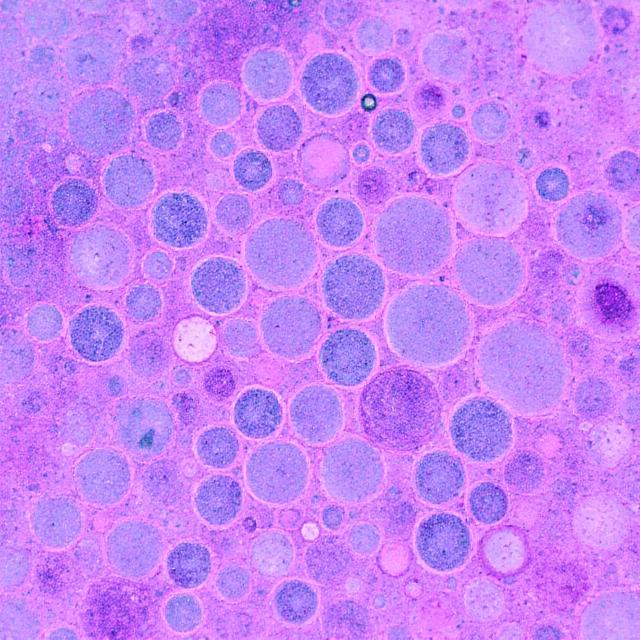In an era when technology and biology are increasingly intertwined, single-cell analysis stands at the forefront of scientific innovation. This transformative approach has redefined our understanding of complex biological systems—from the intricate mechanisms of cancer to the dynamic behavior of the immune system. By zooming in on the individual cell, researchers can now uncover nuances that were previously hidden in the noise of bulk tissue analysis. The implications extend far beyond academic curiosity, promising revolutionary improvements in diagnostics, personalized medicine, and agricultural biotechnology.
A New Frontier in Cancer Research and Beyond
Bridging Technology Gaps with Innovative Cores

At the heart of this revolution is the establishment of specialized core facilities designed to democratize access to cutting-edge technologies. For instance, the Single Cell Genomics Core at Baylor College of Medicine (BCM)—supported by CPRIT—aims to close the technology gap in cancer research. By leveraging existing infrastructure, this core facility supports emerging epigenomics and single-cell technologies with a clear mission: to empower collaborative research groups with cost-efficient, high-quality analysis capabilities. Users who want to benefit from CPRIT’s subsidy are required to sign an agreement, ensuring that state-of-the-art methods are accessible to those who need them most (bcm.edu).
The Evolution of Sequencing in Cancer Diagnostics
Historically, the cost of whole-genome sequencing posed a significant barrier to its widespread use in clinical settings. In the past, sequencing could cost upwards of US$100,000. However, rapid advancements have dramatically reduced these costs to as little as US$600, making next-generation sequencing—and by extension, single-cell analysis—a practical tool for routine diagnostics. A notable example from South Korea demonstrated that while single-cell analysis may currently cost around US$8,000, continuous improvements are driving affordability and broader accessibility (nature.com).
Revolutionizing Diagnostic Workflows
Research from the Netherlands Cancer Institute has shown that by altering pathology workflows—specifically, ensuring that fresh-frozen material is available for diagnostic purposes—clinicians can maximize the potential of single-cell sequencing and other omics technologies. This paradigm shift not only improves the accuracy of diagnoses but also paves the way for personalized treatment strategies. The switch to fresh-frozen samples, though requiring minor workflow adjustments, is a critical step toward integrating advanced genomic methods into everyday clinical practice (frontlinegenomics.com).
Single-Cell Proteomics: A Deeper Dive into the Cellular World
From Transcriptomes to Proteomes
While single-cell RNA sequencing (scRNA-seq) has opened a window into the transcriptomic landscape, a growing body of research highlights the power of single-cell proteomics. Proteins are the workhorses of the cell, and their expression patterns often provide direct insights into cellular function and disease states. The introduction of platforms like Chromium Single-Cell Gene Expression Flex has enabled researchers to profile whole transcriptomes with remarkable sensitivity, even from challenging sample types such as fresh, PFA-fixed, or FFPE tissues (technologynetworks.com).
Spatial Proteomics: Mapping the Tissue Landscape

One of the most exciting advances in single-cell proteomics is the integration of spatial context. Traditional proteomics often lost the architectural context of tissues, but spatial proteomics is changing that narrative. Recent studies have successfully demonstrated that single-cell proteomics can be applied directly to intact tissue, unveiling how diseases unfold across spatial dimensions. This is particularly promising for clinical applications where understanding the microenvironment is crucial—for example, distinguishing tumor margins from normal tissue or mapping immune cell infiltration in cancer (nature.com).
Multiomics: Combining Forces for a Comprehensive View
The frontier of single-cell analysis is rapidly expanding with multiomics approaches that combine transcriptomics, epigenomics, and proteomics. By overlaying these layers of information, researchers can construct a more comprehensive cellular atlas. Companies like Proteintech Genomics are at the forefront, developing tools that enable the simultaneous measurement of RNA and protein expression. Such integrative analyses not only enrich our biological understanding but also open new avenues for targeted therapies and drug development (nature.com).
Transformative Applications Across Fields
Cancer Stem Cells and Therapeutic Innovation
One striking example of single-cell proteomics in action comes from breast cancer research. A study highlighted by ScienceDaily demonstrated that a disruption in a single amino acid within a cellular protein could cause breast cancer cells to adopt stem cell-like behaviors. This phenomenon, mediated by changes in proteins such as vimentin, suggests new potential targets for therapeutic intervention. By analyzing individual cells, researchers identified that these mutations not only increase tumor aggressiveness but also induce stem cell markers, offering a potential pathway for developing treatments that specifically target cancer stem cells (sciencedaily.com).
Immune Profiling and CAR-T Cell Therapy
In the rapidly evolving field of immunotherapy, single-cell analysis is playing a pivotal role. CAR-T cell therapy, which involves modifying T cells to target cancer cells, relies heavily on understanding the cellular heterogeneity of the immune system. Techniques such as single-cell proteomics have been instrumental in deciphering T-cell polyfunctionality, providing insights that drive the research and development of more effective CAR-T therapies. By profiling T cell source material—whether autologous or allogeneic—researchers can identify potential issues with cell quality, expansion rates, and rejection, all of which are critical for optimizing patient outcomes (the-scientist.com).
Unraveling the Complexities of Autoimmune Diseases
Beyond cancer, single-cell RNA sequencing has shed light on chronic inflammatory conditions such as rheumatoid arthritis (RA) and osteoarthritis (OA). Detailed transcriptomic analyses have revealed significant differences in RNA binding proteins (RBPs) and alternative splicing events between RA and OA fibroblast-like synoviocytes. These studies not only highlight the molecular distinctions between these conditions but also underscore the potential for developing RBP-targeted therapies. By mapping cell-to-cell interactions and signaling pathways—such as FN1-CD44 and CXCL12-CXCR4—researchers are moving closer to identifying novel treatment strategies for autoimmune diseases (miragenews.com).
Agricultural Biotechnology: From Shoot Apex to Flower
Single-cell analysis isn’t limited to human health; it’s revolutionizing agriculture as well. An intriguing study on Chinese cabbage employed single-cell RNA sequencing to create a detailed transcriptomic atlas of the shoot apex. By analyzing nearly 20,000 cells, researchers were able to identify 15 distinct cell clusters and map the developmental trajectories that regulate flowering and vernalization. Key genes, such as the MADS-box protein BrFLC2, were found to play crucial roles in suppressing flowering. These insights not only advance our understanding of plant developmental biology but also offer practical applications for crop improvement—helping breeders develop varieties with optimized flowering times and better adaptability to environmental stresses (eurekalert.org).
Lifelong Immune Evolution
A comprehensive single-cell study conducted on a cohort spanning ages 0 to over 90 has illuminated the evolution of the human immune system over a lifetime. By integrating single T and B cell receptor sequencing with mass cytometry and RNA sequencing, researchers were able to profile peripheral immune cells in unprecedented detail. The study revealed that T cells are significantly impacted by aging, with notable changes in cell–cell interactions and clonal expansion patterns. For instance, GNLY+CD8+ effector memory T cells show distinct functional signatures in both children and the elderly, while CD8+ MAIT cells peak during adolescence before declining. Moreover, the discovery of a novel cytotoxic B cell subset in children adds another layer of complexity to our understanding of immune development. This research has practical implications, including the development of immune age prediction models that could eventually guide personalized immunotherapies (emjreviews.com).
Key Insights and Takeaways
The rapid advancements in single-cell analysis are paving the way for breakthroughs across a range of scientific disciplines. Here are some of the key insights gleaned from recent studies and technological innovations:
- Cost Efficiency: Advances in sequencing and analysis techniques have drastically reduced the cost barriers, democratizing access to high-resolution cellular data.
- Enhanced Diagnostics: Shifting to fresh-frozen sample workflows and integrating multiomics are making diagnostics faster, more accurate, and personalized.
- Proteomics Revolution: New platforms and spatial proteomics techniques are enabling researchers to understand protein expression in situ, offering deeper insights into disease mechanisms.
- Collaborative Synergies: The partnership between academic research and industry leaders—such as BCM’s core facilities, Proteintech Genomics, and initiatives at the Chinese Academy of Agricultural Sciences—is driving rapid innovation.
- Broad Applications: From cancer and autoimmune diseases to agricultural biotechnology and immune aging, single-cell analysis is redefining what is possible across multiple domains.
Emerging Trends and Future Directions
As the field continues to mature, several trends are poised to shape the future of single-cell analysis:
- Integration of Multiomics: Combining transcriptomics, proteomics, and epigenomics will provide a holistic view of cellular function and disease, unlocking complex regulatory networks.
- Spatially Resolved Data: Techniques that retain spatial context in proteomics and transcriptomics are expected to become standard, allowing researchers to study cellular interactions within intact tissues.
- Real-Time Analysis: Advances in computational power and machine learning will enable real-time processing of single-cell data, making it possible to adapt experimental designs on the fly.
- Clinical Translation: With cost barriers falling, single-cell analysis will increasingly transition from the lab bench to clinical settings, supporting personalized treatment strategies in oncology, immunotherapy, and beyond.
- Interdisciplinary Collaborations: The convergence of biology, data science, and engineering will fuel further innovations, driving interdisciplinary research initiatives that address complex global challenges.
Reflections on a Dynamic Landscape
The journey from bulk tissue analysis to single-cell resolution has been nothing short of transformative. As we dissect the minutiae of life one cell at a time, the potential for discovery expands exponentially. Each new study, from detailed maps of the Chinese cabbage shoot apex to the evolving signatures of the aging immune system, not only deepens our understanding of biology but also redefines the boundaries of innovation.
Companies and Collaborations Making an Impact:
- Baylor College of Medicine (BCM): With its Single Cell Genomics Core, BCM is at the vanguard of enabling high-quality, cost-efficient research in cancer epigenomics.
- Netherlands Cancer Institute: Their workflow innovations, which prioritize fresh-frozen samples, are crucial for maximizing the potential of single-cell sequencing in diagnostics.
- Proteintech Genomics: By integrating proteomics into single-cell studies, they are providing new tools for a comprehensive understanding of cellular behavior.
- Chinese Academy of Agricultural Sciences: Their groundbreaking single-cell study in Chinese cabbage illustrates the broad applications of these techniques in agriculture and crop management.
Scientific Milestones and Research Contributions:
- Cost Reduction in Sequencing: The dramatic fall in sequencing costs, as noted in studies from South Korea and beyond, underscores a fundamental shift—what was once prohibitively expensive is rapidly becoming accessible to all.
- Innovative Diagnostic Strategies: Advances in single-cell proteomics and RNA sequencing are not just academic exercises but are actively being translated into clinical settings, with promising implications for early detection and targeted therapies.
- Holistic Cellular Insights: Whether it’s unveiling the hidden dynamics of T cell subpopulations or mapping the intricate gene expression patterns in plants, single-cell analysis is offering a more nuanced view of life at its most fundamental level.
An Invitation to Explore
Rather than wrapping up with a traditional conclusion, consider this post an invitation to continue the exploration of a dynamic and ever-evolving field. The power of single-cell analysis lies not just in its technical sophistication, but in its ability to spark new questions, fuel collaborations, and inspire innovative solutions across a myriad of disciplines.
Imagine a future where each cell tells its own story—a future where the subtle variations between cells in a tumor can guide personalized treatments, where the molecular dance of proteins in a tissue reveals the blueprint of life, and where the detailed cellular maps of crops lead to a revolution in sustainable agriculture. This isn’t science fiction; it’s the emerging reality shaped by the relentless pursuit of knowledge and the integration of advanced technologies into everyday research.
Engage and Collaborate:
- For Researchers: Dive into multiomics, explore spatial proteomics, and collaborate across disciplines. The next breakthrough may come from an unexpected intersection of ideas.
- For Clinicians: Embrace the evolving diagnostic tools that single-cell analysis offers. Personalized medicine is not just a promise for the future—it’s rapidly becoming a part of today’s clinical practice.
- For Industry Leaders: Invest in scalable, cost-efficient platforms that support single-cell technologies. The economic and scientific benefits are clear, and the opportunities for innovation are boundless.
- For Curious Minds: Stay informed about these exciting advancements. Follow thought leaders, attend conferences, and read the latest research to understand how these developments may one day impact every aspect of life—from health care to food security.
As we move forward, the quest for understanding at the single-cell level serves as a powerful reminder that science is not a destination, but a journey. Every discovery—whether it be in the lab, the clinic, or the field—adds a new piece to the intricate puzzle of life. In this vibrant landscape, the future is not written by conclusions, but by the questions we dare to ask and the boundaries we refuse to accept.
Embrace the excitement of ongoing discovery. The single-cell revolution is here, inviting us all to look closer, think deeper, and imagine broader possibilities. The dialogue has only just begun, and every new insight carries the promise of a transformative breakthrough waiting just around the corner.
References and Further Reading:
- Single Cell Genomics Core | BCM – bcm.edu
- Single Cell Sequencing and Diagnostic Workflows – frontlinegenomics.com
- Advances in Cost Reduction for Single-Cell Analysis – nature.com
- Chromium Single-Cell Gene Expression Flex – technologynetworks.com
- Proteomics Breakthroughs in Cancer Research – sciencedaily.com
- Immune Profiling in CAR-T Cell Therapy – the-scientist.com
- Chinese Cabbage Transcriptomic Atlas Study – eurekalert.org
- Lifelong Immune Evolution and Single-Cell RNA Sequencing – emjreviews.com
Each of these references underscores the exciting progress being made in single-cell analysis—a field where innovation is not defined by the end of a report, but by the endless possibilities that lie ahead.
